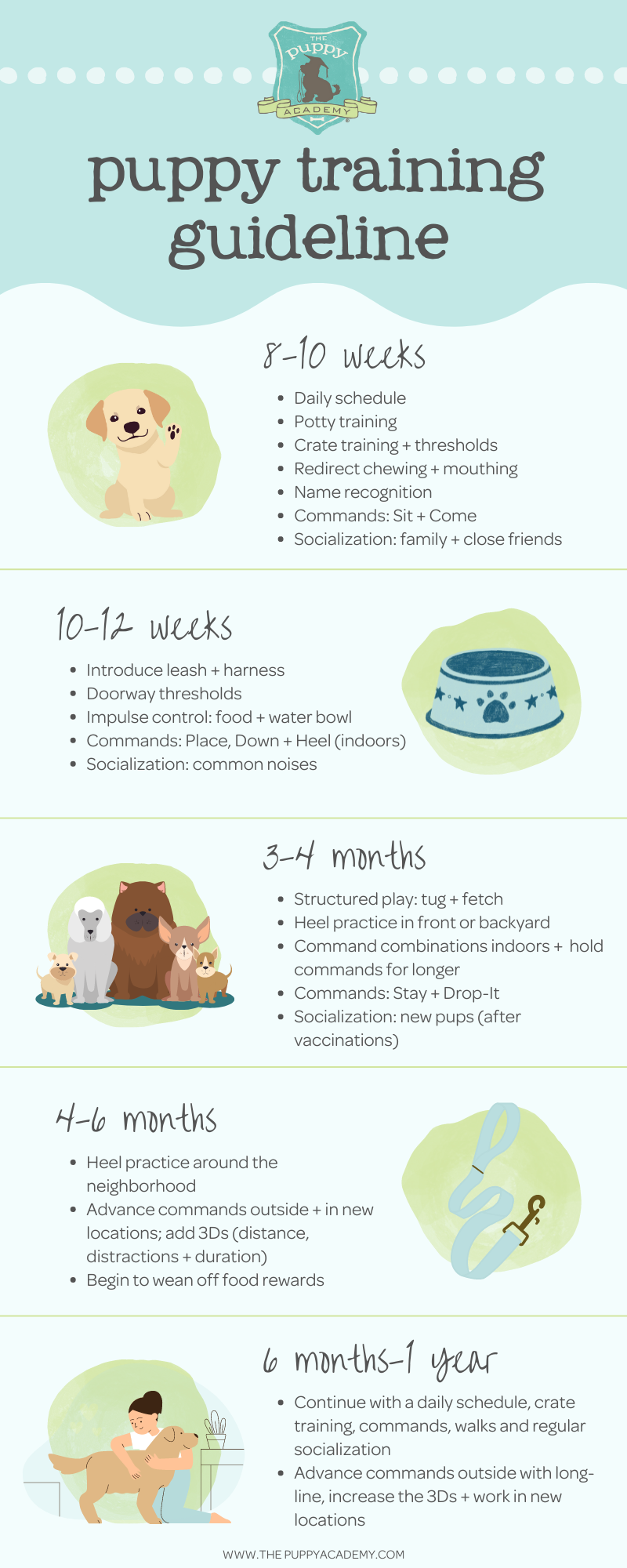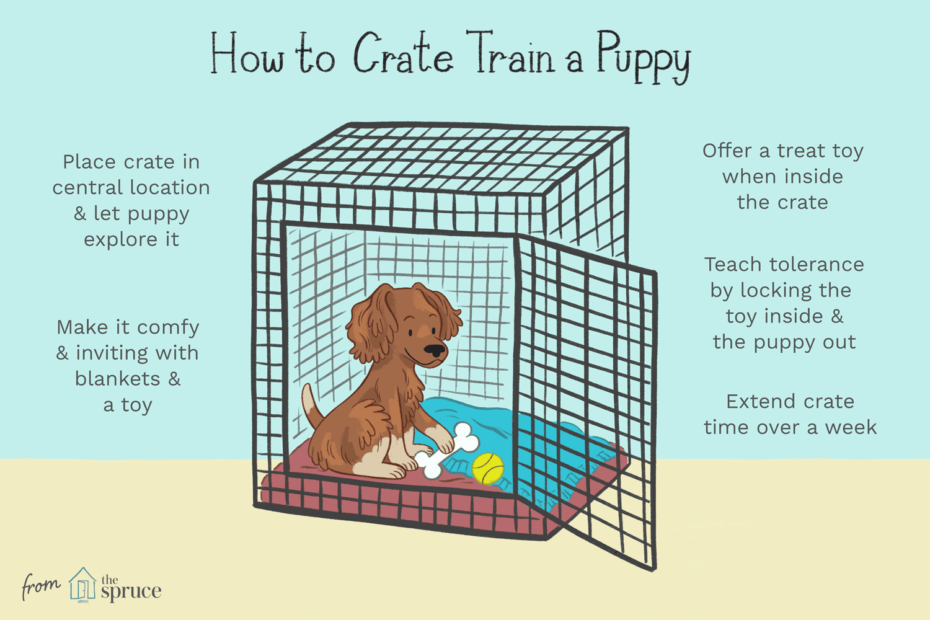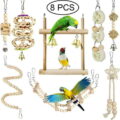Training a puppy is both exciting and challenging. It requires patience and consistency.
Understanding how to train a puppy can help build a strong bond between you and your furry friend. Puppies are like children—they need guidance and structure to grow into well-behaved dogs. This process isn’t just about teaching commands. It’s about communicating with your puppy in a way they understand.
You’ll learn methods that can make training sessions enjoyable for both of you. Whether it’s house-training, teaching basic commands, or addressing behavior issues, the right approach can make a world of difference. Let’s explore how to train your puppy effectively and create a happy, harmonious home.
Also Read

Credit: www.wikihow.com
Choosing The Right Breed
Choosing the right breed for your new puppy is crucial. It can influence your pet’s health, happiness, and behavior. Different breeds have unique needs and characteristics. Understanding these can help you make the best choice for your family and lifestyle.
Factors To Consider
Several factors can help you decide on the right breed. Consider these points:
- Size: Small, medium, or large breeds each have different space and exercise needs.
- Temperament: Some breeds are more active and playful, while others are calm and relaxed.
- Health: Certain breeds are prone to specific health issues. Research common health problems.
- Grooming: Long-haired breeds may require more grooming compared to short-haired breeds.
Matching Lifestyle
Matching your lifestyle with the puppy’s needs is vital. Ask yourself these questions:
- How much time can you dedicate to your puppy each day?
- Do you have a yard or access to a nearby park?
- Is your home suitable for a small or large dog?
- Do you prefer an active dog or a more relaxed pet?
For example, an active family might enjoy a Labrador Retriever. They are energetic and love outdoor activities. On the other hand, a French Bulldog might be better for someone living in an apartment.
| Breed | Best For | Exercise Needs | Grooming |
|---|---|---|---|
| Golden Retriever | Active families | High | Moderate |
| Bulldog | Apartment living | Low | Low |
| Poodle | Allergy sufferers | Moderate | High |
Remember, each breed has its own charm and requirements. Choosing the right one ensures a happy life for both you and your puppy.

Credit: www.robcary.com
Preparing Your Home
Bringing a new puppy into your home is a joyful experience. But before the fun begins, it’s essential to prepare your home for the new arrival. This step ensures your puppy’s safety and helps in managing their behavior.
Puppy-proofing Tips
First, remove any hazardous items from your puppy’s reach. Puppies love to chew on things. So, keep electrical cords, small objects, and toxic plants out of reach. Install baby gates to block off restricted areas. Store cleaning supplies and medications in high cabinets. Secure your trash bins to prevent your puppy from rummaging through them.
Essential Supplies
Stock up on essential supplies before bringing your puppy home. You will need a comfortable bed, food and water bowls, and high-quality puppy food. Get some chew toys to keep them entertained. A collar and leash are necessary for walks. Don’t forget grooming tools like a brush and nail clippers. Puppy pads are helpful for house training. A crate is useful for safe confinement when you can’t supervise.
Establishing A Routine
Training a puppy requires patience and consistency. One of the key steps is establishing a routine. Puppies thrive on structure. It helps them feel secure. A routine will make training easier for both you and your puppy.
Feeding Schedule
Set a regular feeding schedule for your puppy. Feed them at the same times every day. This can help with digestion and potty training. Puppies usually need to eat three to four times a day. As they grow, you can reduce the frequency. Always provide fresh water.
Sleep And Play Times
Puppies need a balance of sleep and play. Schedule regular nap times. Puppies can sleep up to 18 hours a day. Create a quiet, comfortable space for them to rest.
Playtime is also important. It helps with socialization and burns off energy. Schedule play sessions throughout the day. Use toys and games to keep them engaged. This will help prevent destructive behavior.

Credit: www.thepuppyacademy.com
House Training Basics
House training a puppy is an essential part of pet ownership. It helps in keeping your home clean and creating a strong bond with your new furry friend. The process requires consistency, patience, and a good understanding of your puppy’s behavior. Let’s explore some basics to get you started.
Crate Training
Crate training is a popular method for house training puppies. It uses a crate, which acts as a safe and comfortable space for your puppy. Puppies naturally avoid soiling their sleeping area, making the crate an effective tool.
Here are some steps for successful crate training:
- Choose the right crate size: Ensure the crate is large enough for your puppy to stand, turn around, and lie down comfortably.
- Introduce the crate gradually: Place treats and toys inside to encourage your puppy to enter the crate willingly.
- Establish a routine: Use the crate during nap times and at night. This helps your puppy understand that the crate is a resting place.
- Avoid using the crate as punishment: The crate should be a positive space, not a place of fear.
Potty Training
Potty training is crucial for preventing accidents in your home. It requires regular bathroom breaks and positive reinforcement.
Follow these steps for effective potty training:
- Set a schedule: Take your puppy outside first thing in the morning, after meals, and before bedtime.
- Choose a potty spot: Take your puppy to the same spot each time to reinforce the behavior.
- Use commands: Use a specific word or phrase, like “go potty,” to signal your puppy to relieve itself.
- Reward and praise: Immediately praise and give a treat after your puppy goes potty outside. Positive reinforcement encourages repeat behavior.
- Supervise and limit freedom: Keep an eye on your puppy indoors. Use baby gates or keep them in a confined area to prevent accidents.
Consistency is key in both crate training and potty training. With patience and dedication, your puppy will learn these essential skills, making life easier for both of you.
Teaching Basic Commands
Teaching basic commands to your puppy is essential. It helps with obedience and safety. It also builds a strong bond between you and your pup. Start early and be patient. Use positive reinforcement to encourage good behavior. Here are some simple commands to get you started.
Sit And Stay
Begin with the “Sit” command. Hold a treat close to your puppy’s nose. Move your hand up, allowing their head to follow the treat. This will make their bottom lower. Once they are in a sitting position, say “Sit” and give them the treat. Repeat this several times a day. Consistency is key.
Next, teach the “Stay” command. Ask your puppy to sit. Open your palm in front of their face and say “Stay.” Take a few steps back. If they stay, give them a treat and praise. Gradually increase the distance and duration. Practice this regularly to reinforce the command.
Come And Leave It
The “Come” command is crucial for your puppy’s safety. Put a leash on your puppy and let them explore. Gently pull the leash and say “Come.” When they come to you, reward them with a treat and praise. Practice this in various locations to ensure they respond in different environments.
“Leave It” helps prevent your puppy from picking up harmful objects. Hold a treat in both hands. Show one treat and say “Leave It.” Close your fist and wait until they stop trying to get the treat. Once they do, give them the treat from the other hand. Practice this regularly to help them understand the command.
Socialization Strategies
Training a puppy is a rewarding experience. Proper socialization is crucial for your puppy’s development. Socialization helps your puppy grow into a well-behaved adult dog. Focus on different aspects like meeting people and interacting with other dogs. This guide provides effective strategies to ensure your puppy becomes socialized and confident.
Meeting People
Introduce your puppy to various people. This includes men, women, children, and seniors. Each interaction helps your puppy become comfortable around different types of people.
- Start with family members and close friends.
- Gradually introduce neighbors and other visitors.
- Take your puppy to public places like parks.
Reward your puppy with treats and praise during each interaction. This positive reinforcement encourages good behavior. Always supervise these meetings to ensure safety and comfort for your puppy.
Interacting With Other Dogs
Socializing with other dogs is essential. This helps your puppy learn appropriate behavior and manners.
- Begin with calm, friendly dogs that you know.
- Arrange playdates with vaccinated dogs.
- Enroll in a puppy socialization class.
Observe body language closely. Watch for signs of stress or fear. Separate the dogs if things get too intense. Consistency is key. Regular interactions help build your puppy’s confidence.
| Interaction Type | Benefits |
|---|---|
| Meeting People | Builds trust and reduces fear of strangers |
| Interacting with Other Dogs | Teaches social cues and improves behavior |
Dealing With Behavioral Issues
Dealing with behavioral issues in puppies can be a challenging task. Puppies are curious and energetic, which can lead to unwanted behaviors. Addressing these issues early helps in shaping a well-behaved dog. Let’s explore some common behavioral problems and effective ways to handle them.
Biting And Chewing
Puppies often bite and chew as part of their natural development. Teething is one reason, as it helps soothe their gums. Provide chew toys to satisfy this urge. Redirect their attention to these toys whenever they bite or chew on inappropriate items.
Consistency is key. Reward your puppy when they choose the right object to chew. Use commands like “no” or “leave it” to discourage biting. Never use physical punishment, as it can lead to fear or aggression. Positive reinforcement works best. Praise and treat them for good behavior.
Separation Anxiety
Separation anxiety is common in puppies. They feel stressed when left alone. Start by leaving your puppy alone for short periods. Gradually increase the duration. Create a safe and comfortable space for them. Use a crate or a specific area of the house.
Leave them with toys and puzzles to keep them occupied. Avoid making a big deal out of leaving or returning home. Stay calm and assertive. This helps reduce their anxiety over time. Consistency and patience are vital in dealing with separation anxiety.
Positive Reinforcement Techniques
Training a puppy can be a rewarding experience. Positive reinforcement techniques are highly effective. They create a strong bond between you and your puppy. These methods rely on rewarding desired behaviors. This encourages your puppy to repeat those actions. Let’s explore some key techniques.
Using Treats
Treats are a powerful tool in puppy training. They act as immediate rewards. Choose small, soft treats that your puppy loves. Offer a treat right after your puppy performs a desired behavior. This helps your puppy associate the action with a positive outcome. Keep training sessions short. This maintains your puppy’s interest and focus. Gradually reduce the treats as your puppy learns commands.
Verbal Praise
Verbal praise is also an effective reward. Use a happy, enthusiastic tone. Say “good job” or “well done” when your puppy obeys a command. This reinforces the behavior positively. Puppies respond well to the tone of your voice. They can sense your approval and excitement. Combine verbal praise with treats for best results. Over time, your puppy will respond to praise alone.
Frequently Asked Questions
How Do You Start Training A Puppy?
Start with basic commands like sit, stay, and come. Use positive reinforcement techniques such as treats and praise.
What Age To Start Puppy Training?
Begin training your puppy at 8 weeks old. Early training helps establish good behavior and socialization skills.
How Long Should Puppy Training Sessions Be?
Keep training sessions short, around 5-10 minutes. Puppies have short attention spans and tire easily.
What Is The Best Method To Train A Puppy?
Use positive reinforcement. Reward good behavior with treats, toys, and praise. Avoid punishment-based methods.
Conclusion
Training a puppy takes patience, consistency, and love. Stick to a routine. Reward good behavior. Correct gently when needed. Create a positive environment. Use simple commands and be clear. Celebrate small victories. Building trust is key. Your puppy will learn over time.
Stay calm and persistent. Happy training!




